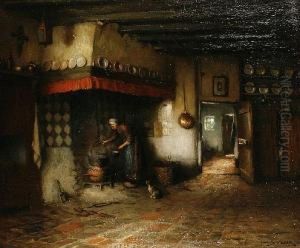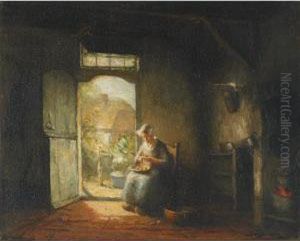Jacob Cornelis Snoeck Paintings
Jacob Cornelis Snoeck was a Dutch artist born in 1741 in the Netherlands. Details about his early life and artistic training are relatively scarce, as he is not among the most extensively documented artists of his era. Nonetheless, we do know that he was active during the 18th century and would have been part of the Dutch art scene during a period that saw the transition from the Baroque to Neoclassicism.
Snoeck's body of work mainly consists of portraits, which was a common genre for artists of the time to engage with, given the demand for personal likenesses by the bourgeoisie and nobility. His portraits would have reflected the styles and tastes of the late 18th century, possibly featuring the characteristic attention to detail and an emphasis on the social status and character of the sitters. He would have worked with oil on canvas, the predominant medium for such works at the time.
While not a great deal is known about his personal life or the breadth of his oeuvre, Snoeck's contributions to Dutch portraiture remain a part of the historical tapestry of the Netherlands' rich artistic heritage. He died in 1831, having witnessed the dramatic changes in the art world and the world at large brought about by the tumultuous events of the late 18th and early 19th centuries, including the French Revolution and the Napoleonic Wars. Despite the paucity of information, any extant works by Snoeck would be of interest to art historians and collectors who specialize in Dutch portraiture of the period.








